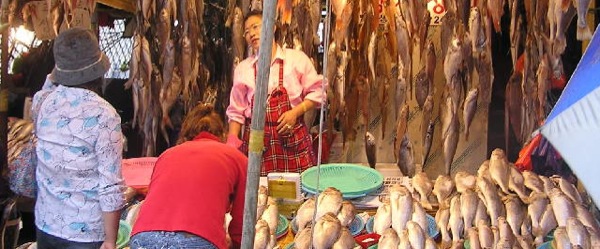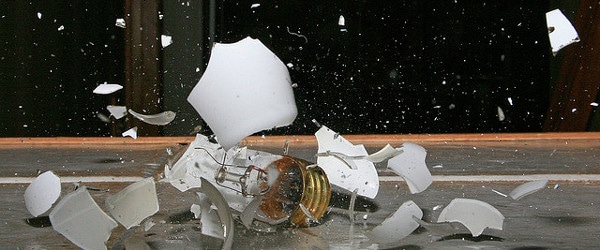Getting experiments right means knowing what can go wrong and how to avoid it. Preparing histology slides takes time and energy, so you don’t want to have to redo them because of an avoidable mistake.
This article highlights seven common histology mistakes, all of which I have personally witnessed (supposedly intelligent and otherwise excellent) scientists commit.
Read on to learn how to avoid making these common histology mistakes next time you are at the bench.
7 Common Histology Mistakes to Avoid
1. Letting Your Samples Dry Out
After deparaffinizing and rehydrating your slides, it is important that your samples stay hydrated. Failure to do so can result in non-specific antibody binding and high background signal. Therefore, if you are not ready to use your rehydrated slides, incubate your slides in a CLOSED container filled with 1x buffer until you are ready to proceed with your staining protocol.
Ideally, all incubations should be done by fully submerging your slides. But this is not practical. Instead, when using expensive reagents, such as antibodies, you may only be able to make enough solution to just cover the samples on your slides.
If you are forced to use low volumes of solution take the following precautions to prevent your samples from accidentally drying out:
Use a Crayon or Wax Pencil
Tracing a circle around your sample with a wax crayon or pencil will prevent your solution from accidentally running off the slide, and keep your tissue well covered and hydrated.
Use a Humidity Chamber
When performing longer incubations (10 minutes or more) be sure to incubate your slides in a humidity chamber. This will prevent your solution from becoming too concentrated or even worse, drying out completely. You can buy a fancy humidity chamber, or make your own.
To make your own humidity chamber all you need is a clean plastic container with a lid, some damp paper towels, and something to rest your slides on (e.g. a disposable plastic 10 ml pipette which you can cut to fit the container).
2. Labelling Your Slides With Pen
This mistake reminds me of an old joke:
“Did you know that NASA spent $8 million developing a pen that could write in space? It took them two years, but they did it. The ‘astronaut pen’ can write upside down, in zero gravity, and even underwater. The Russians used a pencil.”
Be like the Russians: Use a pencil. Even alcohol-resistant pens will fade after the series of ethanol and xylene washes which are required in many histology protocols.
Save yourself heartache, skip the pen (however fancy), and always use a pencil to label your slides.
3. Using Sodium Azide
Sodium azide is a bacteriostatic agent that is commonly added to buffers to prolong their shelf life. Usually, it is good practice to add sodium azide to your PBS or TBE buffers.
However, if you plan on using horseradish peroxidase (HRP) conjugated antibodies you should not add sodium azide to your buffers.
HRP produces localized staining by precipitating a colored product when incubated with a substrate, usually diaminobenzidine (DAB). However, if you put sodium azide in your buffer, the horseradish peroxidase will react with the sodium azide instead.
This reaction produces an azidyl radical that inactivates HRP, and the presence of sodium azide in your buffer will prevent HRP-driven color deposition, and result in poor (or no) staining.
If you are concerned that leaving sodium azide out of your buffers will shorten their shelf life there are a few precautions you can take:
- Use sterile pipetting techniques whenever you work with your histology buffers.
- Store your buffer in the refrigerator.
- Make up smaller batches of buffer or aliquot larger batches into separate sterile containers.
4. Not Setting a Timer
It is all too easy to get caught up answering emails, chatting with a colleague, or checking Facebook (as if you would do such a thing at work!). Set your timer every time, and make sure you keep it on you.
5. Using The Wrong Coverslip
Did you know that coverslips or cover glasses come in numerous thicknesses? I didn’t until my 4th year of graduate school. Well, they do, and it matters, at least at high magnification. Therefore, before you casually bum a coverslip off of a neighboring laboratory, make sure it is the correct thickness for your chosen microscope.
Coverslips come in a variety of thicknesses labeled #0-#4 (Table 1), and more expensive (thicker) is not always better. If you do not use the optimally sized coverslip you will not be able to achieve the best resolution for your given microscope objective.
Table 1. Coverslip thickness guide.
Number | Thickness (mm) |
0 | 0.08 – 0.13 |
1 | 0.13 – 0.16 |
1.5 | 0.16 – 0.19 |
2 | 0.19 – 0.25 |
3 | 0.25 – 0.35 |
4 | 0.43 – 0.64 |
Most microscope objectives have their optimum coverslip thickness engraved on them. For many objectives, the optimal thickness is 0.17 mm.
However, #1 not #1.5 coverslips are the most common. This is because the thickness of the mounting media must also be taken into account when calculating optimal ‘coverslip thickness’.
Therefore a #1 (0.13-0.16 mm) coverslip plus a few millimeters of mounting media equates to the most common ideal thickness of ~0.17 mm. But you should always check the requirements for your objective before using a coverslip.
Note: Some advanced objectives have a corrective collar, which can compensate for various coverslip thicknesses.
6. Using 10x buffer
This is especially important if you are using someone else’s buffers. Always double-check that the buffer you are about to pour on your precious slides is the 1X buffer, not the 5X or 10X buffer concentrate. Just because the bottle is only labeled as TBE, do not assume that means 1x TBE, always check.
7. Wearing Latex Gloves
Yes, we all know we should wear gloves and most of us do, at least around the really nasty stuff. But do you know that not all gloves offer the same protection? Many of us prefer latex gloves for our day-to-day laboratory activities, as the sensitivity cannot be beaten.
However, when working around organic solvents, such as xylene, you should not use latex as they do not offer sufficient protection.
Instead, use nitrile gloves, or even better use PVA or vitron gloves to properly protect yourself. You can find out more about how to choose the right gloves in Our Guide to Gloves.
FAQs
Q. How can I effectively prevent my histology samples from drying out during the staining process, especially when using low volumes of reagents?
A. To prevent histology samples from drying out during staining, especially with low reagent volumes, you can trace a circle around the samples with a wax crayon or pencil to contain the solution as mentioned. Additionally, using a humidity chamber during longer incubations helps maintain hydration.
Q. Are there any alternative methods to extend the shelf life of histology buffers without compromising the staining quality when using horseradish peroxidase (HRP) conjugated antibodies?
A. While sodium azide is commonly added to buffers to extend shelf life, its presence can interfere with horseradish peroxidase (HRP) staining. To maintain staining quality with HRP-conjugated antibodies, it’s best to omit sodium azide from buffers used in these assays and take precautions such as sterile pipetting and refrigerated storage to preserve buffer integrity.
Q. How can I ensure that I’m using the correct coverslip thickness for my microscope objectives to achieve optimal resolution in histological imaging?
A. Achieving optimal resolution in histological imaging requires using the correct coverslip thickness for microscope objectives. Typically, coverslips with a thickness of #1 (0.13-0.16 mm) are common, but it’s essential to check the requirements for specific objectives.
Additionally, considering the thickness of mounting media is crucial for determining the ideal coverslip thickness.
Histology Sins Summarized
Have you fallen prey to any of these histology mistakes? Let us know in the comments.
Want to know more about histology? Visit the Bitesize Bio Histology Hub for tips and tricks for all your histology experiments.
Originally published 13 September 2013. Reviewed and updated July 2021.







